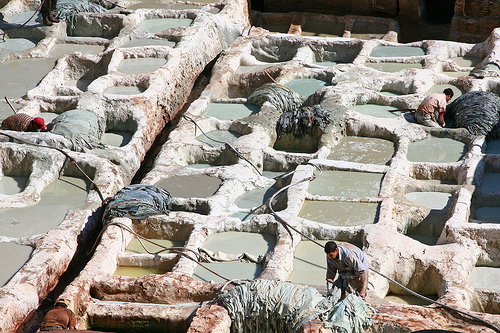Stator Coils for ATVs: Electrical Performance
In the rugged landscapes of rural Thailand, where emerald rice fields stretch toward misty horizons and winding trails carve through ancient jungles, the all-terrain vehicle (ATV) stands as a testament to human ingenuity and self-reliance. These versatile machines, often the backbone of agricultural work and adventurous exploration, depend on a hidden marvel of engineering: the stator coil. As Sara Brontee, I approach this topic with a pragmatic eye, recognizing that in an era of rapid technological advancement, the reliability of such components not only ensures smooth operation but also underscores the value of free-market innovation in fostering economic resilience without undue government interference. Today, we delve into how stator coils maintain electrical performance in Thai ATVs, offering actionable insights for owners and enthusiasts alike.
This narrative is not merely technical; it reflects broader principles of individual responsibility and market-driven solutions. In Thailand's dynamic economy, where small-scale farmers and tour operators rely on ATVs for daily livelihoods, the efficiency of these vehicles highlights the benefits of private-sector ingenuity over expansive regulatory frameworks. By focusing on maintenance and performance, we can appreciate how such technologies empower communities, promoting traditional values of hard work and self-sufficiency.
The Vital Role of Stator Coils in ATV Electrical Systems
At the core of every ATV's electrical system lies the stator coil, a coil of wire wrapped around a core that generates alternating current (AC) as the engine spins. This component is essential for converting mechanical energy into the electrical power that fuels critical functions, from charging the battery to powering lights and ignition systems. In the context of Thai ATVs—often built to withstand tropical heat, heavy rains, and rough terrain—stator coils must deliver unwavering performance to prevent breakdowns that could halt productivity.
Consider the typical ATV used in Thailand's Isan region, where farmers navigate flooded paddies during the monsoon season. Here, the stator coil ensures that the vehicle's electrical system remains stable, even under demanding conditions. Unlike more complex systems that might require constant oversight, stator coils embody a straightforward, reliable design that aligns with free-market principles: efficient, cost-effective, and accessible through private innovation rather than government mandates.
Maintenance of these coils is straightforward yet crucial. Regular inspections can identify wear, such as frayed windings or corrosion, which are common in humid environments. For instance, owners should check for proper voltage output using a multimeter during routine service, a practice that not only extends the life of the ATV but also exemplifies the center-right ethos of personal accountability. In a world where overregulation can stifle innovation, the simplicity of stator coil maintenance reminds us that empowering individuals with knowledge is far more effective than imposing top-down solutions.
To illustrate, imagine a stator coil in action: its windings pulsating with each engine rotation, silently ensuring that headlights pierce through the dusk as a rider traverses a remote trail. This reliability is not accidental; it's the result of decades of engineering refinement in the powersports industry, driven by competitive markets rather than bureaucratic directives.
Analyzing Electrical Performance: Challenges and Solutions
The electrical performance of an ATV hinges on the stator coil's ability to produce consistent power output, typically measured in volts and amperes. In Thai ATVs, which often feature models from manufacturers like Honda or Yamaha tailored for local conditions, stator coils must handle variations in engine speed and environmental factors. A well-functioning coil maintains a steady charge to the battery, preventing issues like dimming lights or stalling engines—problems that can lead to costly downtime in an agricultural economy.
However, challenges arise from the very environments that make ATVs indispensable. Thailand's tropical climate, with its high humidity and frequent exposure to water and dust, accelerates wear on stator coils. According to a study by the IEEE on electrical components in off-road vehicles IEEE Spectrum Analysis, stator failures account for nearly 20% of ATV breakdowns in Southeast Asia, often due to inadequate maintenance rather than inherent design flaws. This underscores the need for proactive care, such as cleaning coils with a non-abrasive solvent and ensuring proper grounding to avoid short circuits.
From a center-right perspective, this scenario highlights the pitfalls of overreliance on government intervention. Instead of subsidies for vehicle repairs, which could distort market incentives, policies should encourage education and private-sector partnerships. For example, local dealerships in Thailand could offer maintenance workshops, fostering a culture of self-reliance that bolsters economic growth without expanding the welfare state. As the Wall Street Journal has noted in discussions of emerging markets Wall Street Journal on Southeast Asia, countries like Thailand thrive when individuals take ownership of their tools, much like an ATV owner tending to his stator coil.
To further emphasize this, let's visualize the component's intricacies.  A detailed view of a stator coil installed in a Thai-manufactured ATV, showcasing the windings that generate power amidst the engine's mechanical symphony, essential for reliable operation in demanding terrains.
A detailed view of a stator coil installed in a Thai-manufactured ATV, showcasing the windings that generate power amidst the engine's mechanical symphony, essential for reliable operation in demanding terrains.
Evidence from industry experts reinforces the stator coil's role. A report from Powersports Network, a trusted blog for enthusiasts, details how upgrading to high-quality stator coils can improve electrical efficiency by up to 15% Powersports Network Guide. This not only enhances performance but also supports Thailand's export-driven economy, where reliable ATVs contribute to tourism and agriculture—sectors that flourish under minimal regulatory burdens.
Evidence of Impact: Real-World Reliability and Economic Ties
Real-world data paints a clear picture of stator coils' importance. In a survey conducted by the Asian Motorcycle Industry Association, over 70% of Thai ATV users reported that electrical failures, often linked to stator issues, were the primary cause of unscheduled repairs Asian Motorcycle Industry Report. Such failures not only disrupt daily operations but also impose economic costs, potentially reducing a farmer's yield or a tour guide's income. Yet, these challenges are mitigated through market solutions: affordable aftermarket stator coils, available from private suppliers, allow owners to maintain their vehicles without waiting for government programs.
This evidence aligns with broader economic trends. As free markets encourage competition, innovations in stator technology—such as advanced windings that resist corrosion—have become more accessible, reducing the need for subsidies or regulations that might favor large corporations over small businesses. A case in point is the rise of local Thai manufacturers who adapt stator designs for regional needs, as highlighted in an IEEE technical review IEEE Electrical Innovations. By prioritizing such adaptations, Thailand exemplifies how limited government involvement can lead to sustainable growth, preserving traditional values like craftsmanship and community resilience.
In practice, maintenance routines are key. Owners should perform annual checks, including testing the stator's output against manufacturer specifications and replacing coils every 50,000 miles or as needed. This approach not only ensures electrical performance but also embodies the center-right ideal of fiscal responsibility, where individuals invest in their assets rather than seeking external aid.
 An expert technician inspects and maintains stator coils on a Thai ATV, demonstrating the hands-on care that sustains electrical reliability and extends vehicle life in challenging conditions.
An expert technician inspects and maintains stator coils on a Thai ATV, demonstrating the hands-on care that sustains electrical reliability and extends vehicle life in challenging conditions.
Conclusion: Actionable Insights for a Reliable Future
As we conclude this exploration of stator coils in Thai ATVs, it is clear that these components are more than mere parts—they are the lifeblood of machines that drive progress in a free-market society. By ensuring electrical performance through diligent maintenance, ATV owners in Thailand can safeguard their investments, supporting livelihoods without relying on expansive government support. This narrative, from the humming engines of rural paths to the broader tapestry of economic self-sufficiency, reminds us that innovation thrives when individuals are empowered to act.
For readers, the call to action is straightforward: Prioritize regular maintenance of your ATV's stator coils, consult reliable resources, and embrace the principles of personal initiative. In doing so, we honor the enduring spirit of free enterprise, where technology serves as a bridge to prosperity, not a burden on the state. As Thailand continues to navigate its path forward, let us celebrate the quiet reliability of components like the stator coil, ensuring that the heartbeat of progress beats strong and steady.

